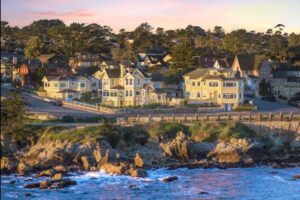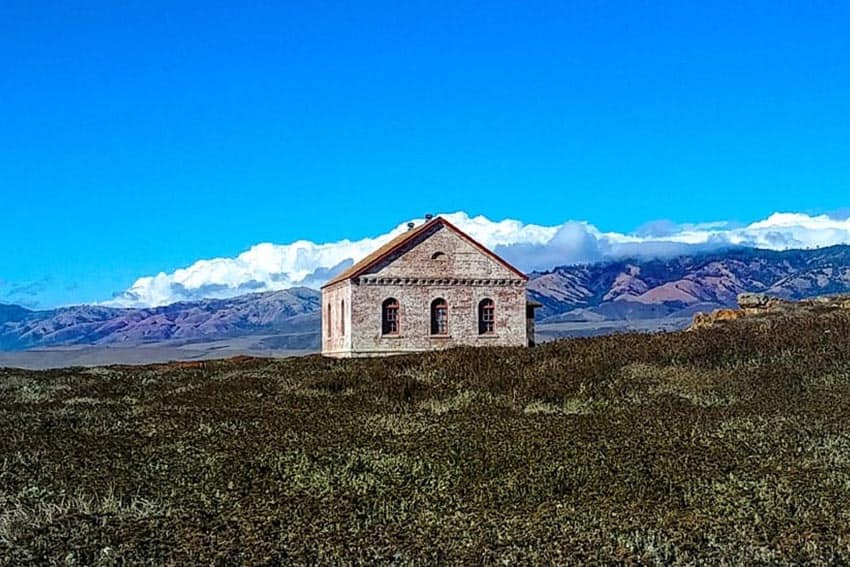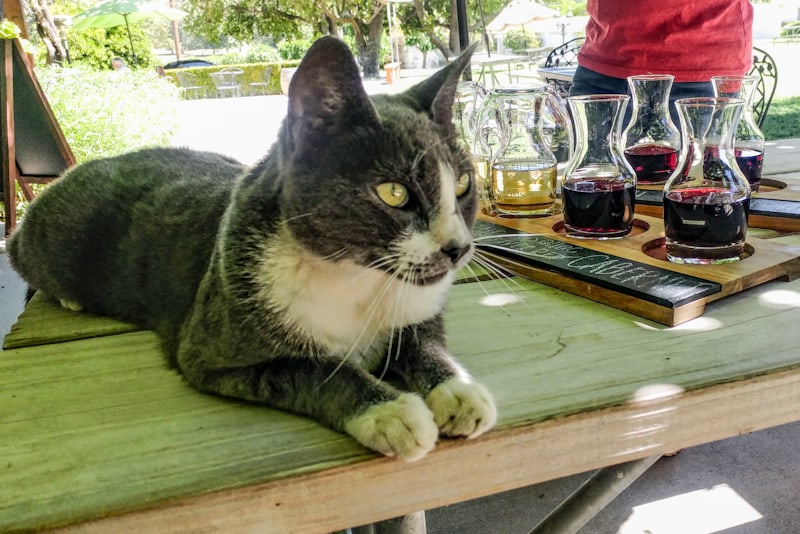
Death Valley California: The Lowest
By David Rich
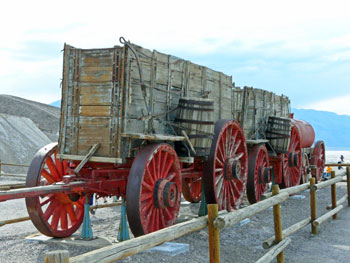
California’s Valley of Death is the lowest, hottest and driest in North America, as low as you can go at minus 282 feet (86 meters), smack dab in the middle of the largest national ![]() park in the coterminous United States (140 by 5-15 miles; 225 by 8-24 kilometers), a mere 85 miles (136 kilometers) from the highest point atop Mt. Whitney jutting 14,494 feet (4418 meters); perhaps proving it’s time the U.S. went metric.
park in the coterminous United States (140 by 5-15 miles; 225 by 8-24 kilometers), a mere 85 miles (136 kilometers) from the highest point atop Mt. Whitney jutting 14,494 feet (4418 meters); perhaps proving it’s time the U.S. went metric.
Death Valley was a rich ‘un, chock full of white gold, aka borax, regular gold, copper and silver. The gold mining boomtown of Ryolite lasted a decade, exploding with 10,000 speculators, its own stock exchange and ribald opera, but the mine closed in 1911 and the population plummeted to zero.
However, the famous 20-mule team wagon trains hauling borax endured in American folklore and on television, narrated by the great American communicator, Ronald Dutch Reagan.
Twentieth Century Death Valley was distinguished by eccentric characters. Perhaps the most vivid was Death Valley Scotty, a graduate of Buffalo Bill’s Wild West Show and spinner of tall tales.
Scotty’s Castle, a sprawling pink extravaganza remains a primary attraction at the north end of the Park. It was built by Chicago businessman Albert Johnson who admired gabby Scotty as his own alternative Wild West Show.
Scotty’s pithy philosophy is carved on his gravestone high on a hill overlooking the castle: “I got four things to live by: Don’t say nothing that will hurt anybody. Don’t give advice — nobody will take it anyway. Don’t complain. Don’t explain.” Accordingly Scotty never explained where the theoretically richest gold mine in Death Valley, discovered, known and mined solely by him, was actually located.
Today the visual riches of Death Valley attract tourists from around the world, Europeans and Asians converging in rental cars and chartered RVs. My initial favorite attraction was cheek to jowl with tourists staring at rare standing water, appropriately named Bad Water, a few hundred yards from the Valley’s lowest spot.
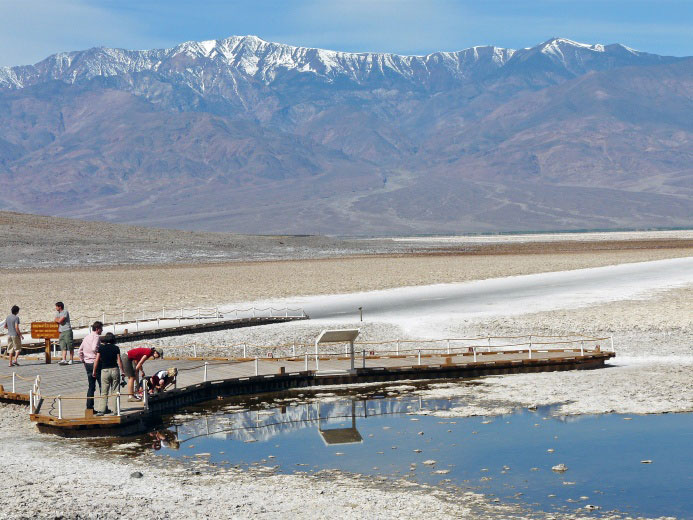
Bad Water acts as a superb reflecting pool for the snow-capped mountains to the west, framing salt plains stretching umpteen miles to infinity.
Five hundred and fifty square miles of salt plain sit below Sea Level; if the sediment above the Valley floor’s sinking bedrock were blown away Death Valley would be over 9000 feet (2745 meters) below Sea Level, by far the deepest dip on the planet.
The gaily colored innards of the earth decorate the eastern edge of the Valley, offering spectacular hikes and excellent drives, except for tourists stuck in an RV and thus unable to negotiate the narrow roads and tight curves.
My two favorite loop drives are truly gorgeous. The most popular is Artist’s Drive and Palette, a 13-mile narrowly-paved loop from which vehicles longer than 25 feet are pragmatically prohibited. The best other driving circuit is 20 Mule Team Canyon, a marginal dirt track winding through badlands stratiated in hues from mustard yellow and orangey red to lava black and turgid teal.

The very best hike is the 4-mile (7-kilometer) Golden Canyon loop that winds through petrified fingers of dunes among domes of towering beauty and undulating waves of crackling color.
Golden Canyon sits immediately below the Valley’s most popular panorama at Zabriskie Point, for some reason over-populated by eccentric European women tottering up the trail in extremely high heels. But brightly dressed European tourists provide helpful accents to the scenery; for 1000 unspoken words see the photo titled Zabriskie Point.
However, all Death Valley hikes are not created equal, which means beware of National Park literature lauding Falls Canyon as a spectacular wilderness canyon except for those for whom spectacular means brown stratiated with drab, accented by beige lowlights.
Amazingly, two sets of tourists I chatted with in Falls Canyon, relative locals and exotic foreigners, described the Falls Canyon hike as spectacular, a word that apparently means something different in English spoken by those from Oakland and Portugal.
Far superior to Falls Canyon is the hike around the humongous orange Ubehebe Crater that dominates a landscape reminiscent of the moon’s surface.
Alternatively explore any of the five areas of sand dunes with some up to 680 feet (205 meters) high, a glistening experience in the moonlight.
Or walk the Devil’s Golf Course with its jagged pinnacles of salt and the Harmony Borax Works with salvaged 20-mule team wagons.
Death Valley also harbors hidden salt springs and marshes doted on by roadrunners running pell mell most everywhere, which may mean wily coyote is likely near extinction.
But my greatest delight was scampering up ridges onto high domes revealing cascading vistas to the horizon, which is a favorite activity at Texas Spring campground that abuts a particularly scenic section of the Park. Pre-school children delight in the cliff-hugging trails around buttes and up precipitous ridges while parents shriek in fake fright and snap away with digital cameras
In 1994 the Valley celebrated forty days over 120 F (49 C) and any summer will record ground temperatures over 200 F (94 C). So skip the Valley of Death in summertime. Otherwise you may never leave California.
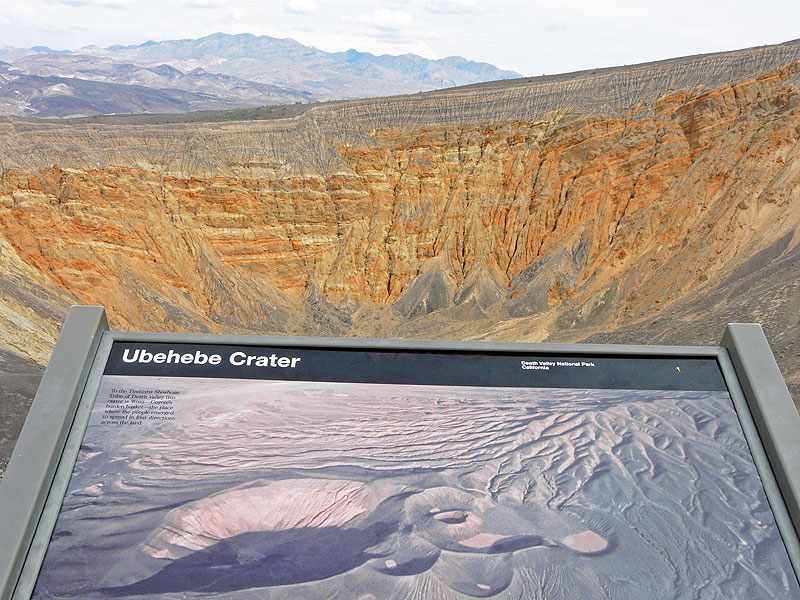
When you go in autumn, winter or springtime:
Death Valley’s western mountains are perfectly palatable in summer but the Valley is dangerously warm. Furnace Creek, near the middle of the Park where most arrive from Nevada, offers three campgrounds and the expensive Furnace Creek Inn at $300-$400 a night or Furnace Creek Ranch from $125-200.
Campgrounds are $14 a night, water and toilets available, no hookups; half price for seniors. Campgrounds are also available at Stovepipe Wells and in the north end of the park at Mequite Springs. For Park information, and lots of it, see nps.gov/deva
Love California? Get our California Plane Reader with dozens of stories for your Kindle, iPad or Nook.
- Mali: Djenne, Vivid Colors and Timbuktu - February 28, 2024
- Pantanal, Brazil: Dozens of Magnificent Creatures - September 17, 2019
- David Rich: The Monkey on My Back to See it All - November 12, 2018


